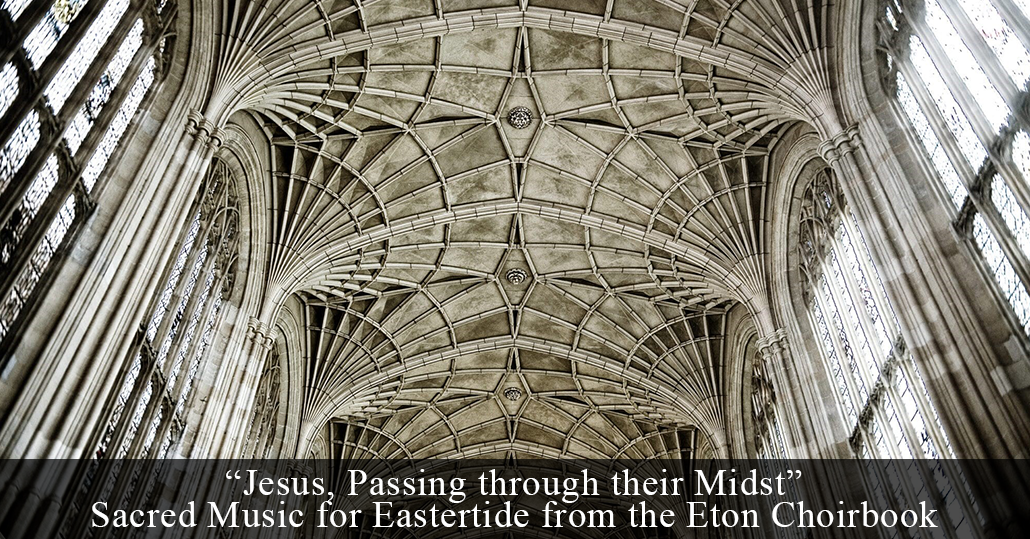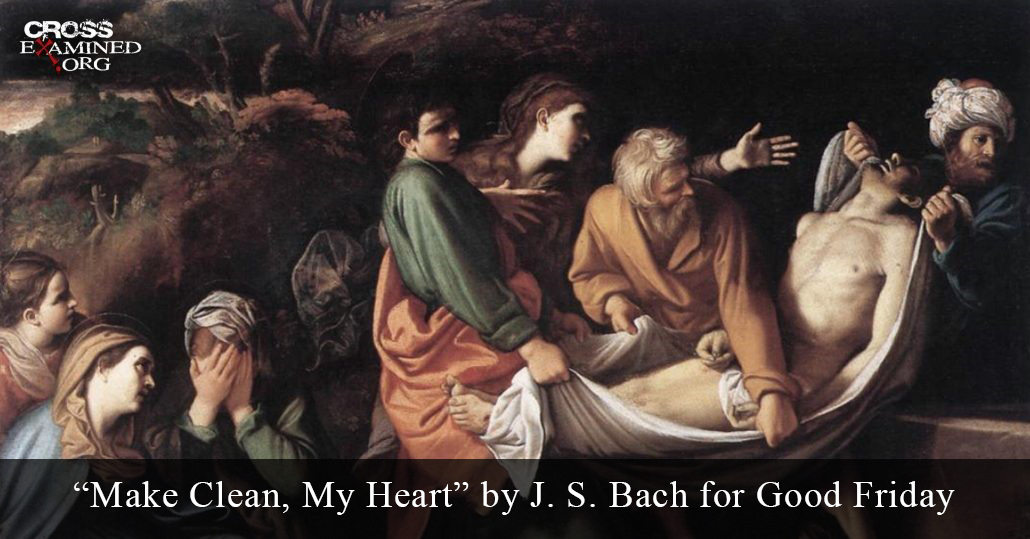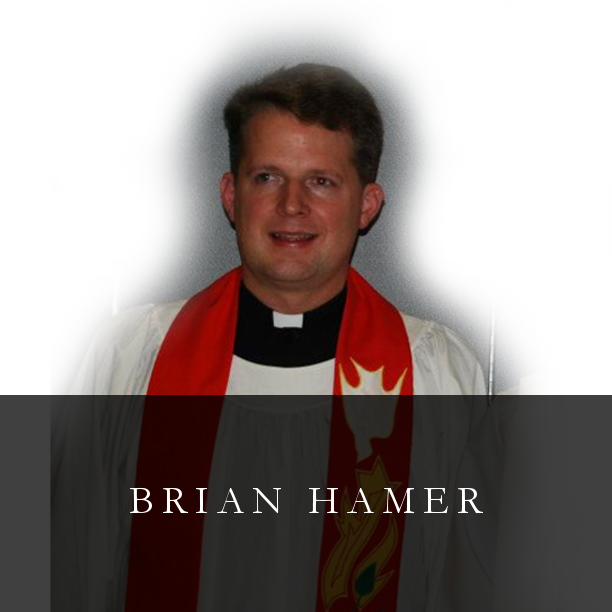– 1 Samuel 2:8
| | The Eton Choirbook was compiled around 1500 for use in the chapel at Eton. There would have been chapels that had books like it all over the country, but because of the [English] Reformation most of them were destroyed [by Henry VIII]. It was only because a miracle that the Eton Choirbook survived. (A New Heaven: Harry Christophers and The Sixteen, p. 46) |
| | It’s thought that [the book] was sent away to the bookbinders, because the leather was wearing away, and that’s how it escaped. It wasn’t found until 1895, and was discovered by the writer M. R. James, who was later to become Provost at Eton. He was cataloguing the library, and there it was, gathering dust on the bottom shelf. (A New Heaven, p. 46) |
We will return to the Eton Choirbook from time to time to explore the flowering of genius that laid the musical foundation for Thomas Tallis and William Byrd. Therein we will discover some of the most glorious polyphony ever written, with special focus on settings of the Magnificat. For now, however, let us consider a unique work that is fitting for Eastertide, “Jesus passing through their midst” by Robert Wylkynson (c. 1450–c. 1515).
As you survey the text below, you will easily recognize it as the Apostles’ Creed, but arranged in twelve phrases (instead of three for the three persons of the Trinity) and the twelve Apostles, based on the charming legend that each of the Apostles penned one phrase of the Creed. (Even though this is probably medieval legend, those who promulgated this idea gave it some serious thought, for each Apostle “sings” a phrase that corresponds to his own unique biblical narrative, such as Thomas confessing the resurrection.) This legend aside, the theological connection is truly profound: the Creed is the doctrine of the Apostles, now passed from generation to generation in an unbroken chain of Christian confession, lasting to the end of days.
The three-word antiphon, “Jesus autem transiens,” is unique to the Eton Choirbook. The Latin grammar in the Vulgate appears to echo Luke 4:30, “But passing through their midst, [Jesus] went away”—Luke’s description of Jesus escaping the angry mob in Nazareth as they tried to throw him off a cliff. But I do not think that is the primary referent here because Jesus was escaping in Luke 4, but He does something far different for the Apostles after His resurrection!
In my estimation, this antiphon developed organically some time before 1500 as a theological interpretation of John 20:19, “Then came Jesus and stood in the midst, and saith unto them, ‘Peace be unto you.’” Thus Jesus passed through the midst of ten disciples that first Easter Sunday, offering them peace and proving that He had indeed risen from the dead. He passed through the midst of eleven disciples again a week later and equipped them with the preached word of forgiveness. Jesus continued to abide with them in subsequent resurrection appearances, and to dwell sacramentally with His church until His final appearance in majesty on the last day.
The musical form chosen to depict Jesus standing amidst His Apostles stands in contrast to the elaborate polyphony in the rest of the Eton Choirbook. This work is what conductor Peter Phillips calls “a one-off . . . an exercise in extreme sonority” (The Musical Times 158:1939, p. 58). The musical form is a canon (literally “law”), wherein each subsequent voice imitates the opening statement, continuing the pattern in thirteen parts. Thirteen singers—one voice the antiphon and one for each Apostle—sing through the entire score, resulting in a single voice at the beginning and the end, all thirteen voices at the dynamic climax, and every numerical combination (two, three, four, etc.) of voices in between.
As you follow the video link below, consider the theological significance of the antiphon and how it shapes the entire musical Creed.
| [Peter] [Andrew] [James] [John] [Thomas] [James the Younger] [Philip] [Bartholomew] [Matthew] [Simon] [Thaddeus] [Matthias] | Jesus autem transiens. Jesus, passing through their midst. Credo in Deum, Patrem omnipotentem, creatorem caeli et terrae. I believe in God, the Father Almighty, maker of heaven and earth. Et in Jesum Christum Filium ejus unicum, Dominum nostrum, And in Jesus Christ His only Son, our Lord, qui conceptus est de Spiritu Sancto, natus ex Maria Virgine, who was conceived by the Holy Spirit, born of the Virgin Mary, passus sub Pontio Pilato, crucifixus, mortuus et sepultus. suffered under Pontius Pilate, was crucified, dead, and buried. Descendit ad inferna. Tercia die resurrexit a mortius. He descended into hell. The third day He rose again form the dead. Ascendit ad caelos, sedet ad dexteram Patris omnipotentis. He ascended into heaven, and sits at the right hand of God the Father almighty. Inde venturus est judicare vivos et mortuos. From then He shall come to judge the living and the dead. Credo in Spiritum Sanctum, I believe in the Holy Spirit, Sanctam ecclesiam catholicam, sanctorum communionem, The holy Christian church, the communion of saints, remissionem peccatorum, the forgiveness of sins, carnis resurrectionem et the resurrection of the body and vitam aeternam. Amen. life everlasting. Amen. Jesus autem transiens. Jesus, passing through their midst. |
The header quote that I have chosen for this issue of “Lifted Voice” is from the “Old Testament Magnificat,” Hannah’s canticle (1 Sam 2:1-10). Similarly, the CD which first introduced me to Wylkynson’s setting of the Apostles’ Creed is entitled “The Pillars of Eternity: Music from the Eton Choirbook, Volume III” (Collins CD 13422; reissue: CORO CD 16022). The concept of the pillar is particularly fitting for cathedral music. Consider, for instance, that of the three great architecturally-based tourist attractions—the Egyptian pyramids, the Greco-Roman ruins, and the European cathedrals—only the cathedrals are still used for their original purpose, that is, Christian worship. Like the gospel itself, these majestic pillars have withstood the test of time, the ransacking of Henry VIII, the bombs of Hitler’s Luftwaffe, and much more. In contrast to the crumbling architecture, ephemeral trends, and every false doctrine, sacred music for “the church of the living God, the pillar and ground of the truth” (1 Tim 3:15) joins us with the choir of angels and archangels to worship Jesus, who is passing through our midst every time we confess our faith in Father, Son, and Holy Spirit.




 RSS Feed
RSS Feed
